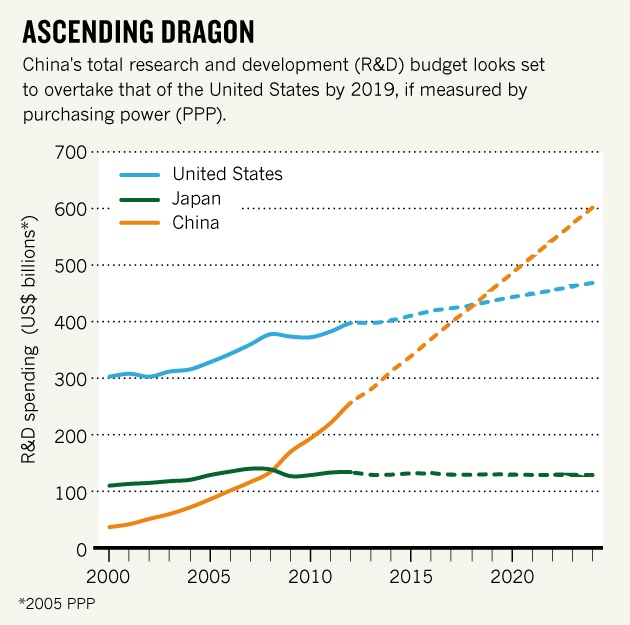Pakistan-China ties are rapidly growing well beyond the economy and the military with tens of thousands of Chinese and Pakistani citizens regularly traveling between the two countries.
More Pakistanis than ever are learning the Chinese language. China with its world class educational institutions is emerging as one of the top destinations for Pakistanis studying abroad. China-Pakistan relationship is becoming a truly multi-dimensional strategic relationship. This new phenomenon is the subject of a Pakistani spice company television commercial featuring a young Chinese woman in Lahore making the popular biryani dish using Shan masala.
China-Pakistan Institute:
Headed by Pakistani Senator Mushahid Hussain, Pakistan-China Institute (PCI) is a non-governmental, non-partisan and non-political think-tank. Its goal is to promote people to people ties between the two nations in defense and diplomacy, education and energy, economy and environment, and with a particular focus on youth and women. PCI is working to promote discussions and in depth analyses with multi-faceted initiatives including conferences, lectures, exchange of visits, journals, e-magazines and documentaries.
Chinese Language:
The Chinese language department at Islamabad's National University of Modern Languages (NUML) has been around for nearly half a century, according to Pakistan's Dawn newspaper. When it was first established in September 1970, there were only about 13 students who took the course.
In April 2005, Islamabad's Confucius Institute was established by The Office of Chinese Language Council International (Hanban), Beijing Language and Culture University, and NUML.
The interest and attendance of Chinese language courses at NUML has soared since the launch of China-Pakistan Economic Corridor (CPEC). The year 2017 saw 460 Pakistani students attending the courses.
Pakistani Students in China:
There are 22,000 Pakistani students attending universities in China, making it the fastest growing destination for Pakistanis studying abroad.
The United Kingdom still remains the top source of international education for Pakistanis. 46,640 students, the largest number of Pakistani students receiving international education anywhere, are doing so at Pakistani universities in joint degree programs established with British universities, according to UK Council for International Student Affairs.
Globally, China has become a more attractive destination for foreign students. It now ranks third after the US and the UK. This year, it is likely to move up to the second spot.
China's Strides in Science and Technology:
Why is China becoming a fast growing destination for foreign students, including Pakistanis studying abroad? A story in India's "The Wire" online magazine has explained it in terms of the rapid rate of China's progress in Science, Technology, Engineering and Math (STEM) fields as follows:
America's National Science Foundation and National Science Board have recently released their biennial science and engineering indicators which provide detailed figures on research and development (R&D), innovation and engineers. But its true message is in a different direction, “China has become,” concludes Robert J. Samuelson in a column, “or is in the verge of becoming – a scientific and technical superpower. This is not entirely unexpected given the size of the Chinese economy and its massive investments in R&D, even so, he says, “the actual numbers are breathtaking”.
1. China is the 2nd largest spender in R&D after the US, accounting for 21% of the world total which is $2 trillion. It has been going up 18% a year, as compared to 4% in the US. An OECD report says that China could overtake the US in R&D spending by 2020.
2. China has overtaken the US in terms of total number of science publications. Technical papers have increased dramatically, even if their impact, as judged by citation indices, may not be that high.
3. The US continues to produce more PhDs and attract more foreign students. But new international enrollment at US colleges was down for the first time in the decade in 2017. The Trump administration’s anti-immigration rhetoric and actions are scaring away students.
4. China has begun shifting from being an assembler of high-tech components, to a maker of super computers and aircraft and given the pattern of its investments in R&D and technology development, it is focusing on becoming the world leader in artificial intelligence (AI), quantum communications, quantum computing, biotechnology and electric vehicles.
Summary:
Pakistan-China ties are rapidly growing well beyond the economy and the military with tens of thousands of Chinese and Pakistani citizens regularly traveling between the two countries. More Pakistanis than ever are learning the Chinese language. China with its world class educational institutions is emerging as one of the top destinations for Pakistanis studying abroad. It is becoming a truly multi-dimensional relationship which will help Pakistan rise with China on the world stage.
Related Links:
Haq's Musings
China-Pakistan Strategic Ties
China-Pakistan Defense Tech Cooperation Irks West
Pakistan-Russia-China vs India-Japan-US
Pakistan Rising or Falling? Myth Vs Reality
Facts and Myths About China-Pakistan Economic Corridor
China Emerges as Top Destination for Pakistanis Studying Abroad
Sec Hagel: India Using Afghanistan to Launch Attacks in Pakistan
Ex Indian Spy Documents RAW's Successes Against Pakistan
Riaz Haq's Youtube Channel



You need to be a member of PakAlumni Worldwide: The Global Social Network to add comments!
Join PakAlumni Worldwide: The Global Social Network